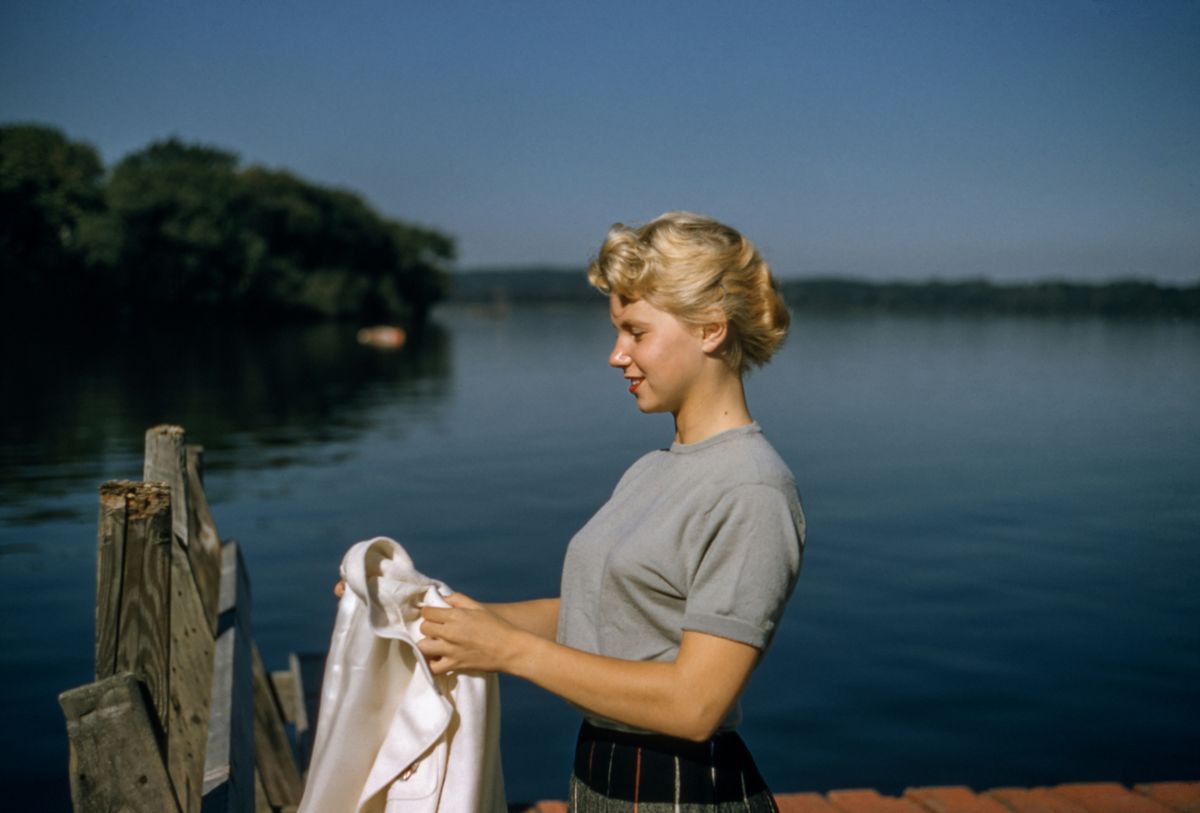The exhilarating world of racing games has captivated players for decades, evolving from simplistic arcade origins to sophisticated simulations that mirror real-world driving. These games have not only provided endless entertainment but have also influenced the realm of professional racing. In ‘Mastering the Track: The Evolution of Racing Games,’ we delve into the intricate mechanics, customization options, social dynamics, innovative features, and the tangible impact of virtual racing on actual driving skills.
Key Takeaways
- Racing games blend accessibility with challenging physics, offering a learning curve that appeals to both novices and experienced players.
- Customization and personalization are key elements that enhance player experience and emotional investment in racing games.
- The social and competitive aspects of racing games have fostered vibrant online communities and new competitive formats.
- Innovation in game features, such as track builders and regular content updates, is crucial for player engagement and retention.
- Sim racing has a significant impact on professional driving, providing a training ground that bridges the gap between virtual and real-world racing.
The Foundations of Racing Game Mechanics

Understanding the Physics of Virtual Racing
The essence of racing games lies in their ability to simulate the complex interplay of physics that governs real-world driving. Understanding the virtual physics is crucial for mastering the track, as it dictates how the car responds to player inputs and environmental factors. The physics engine calculates various elements such as traction, weight distribution, and aerodynamics, which are pivotal in creating a realistic racing experience.
Players often encounter a steep learning curve when dealing with the intricacies of virtual racing physics. To aid in this process, here’s a simplified breakdown:
- Traction determines how well the tires grip the road.
- Weight distribution affects the car’s balance during maneuvers.
- Aerodynamics influence speed and handling at different velocities.
Embracing these concepts allows players to anticipate their vehicle’s behavior and adjust their driving strategy accordingly, leading to improved performance and a more immersive gaming experience.
The challenge for developers is to balance authenticity with playability, ensuring that the game is accessible to newcomers while still offering depth for seasoned players. Games like Flatout, known for its ‘no-seatbelts’ approach and ragdoll physics, showcase how different titles prioritize various aspects of racing physics to create unique gaming experiences.
Balancing Accessibility and Difficulty
In the realm of racing games, the mantra easy to pick up, difficult to master encapsulates the essence of player engagement. Developers strive to create experiences that are welcoming to newcomers while still offering depth and challenge to seasoned players. This balance is crucial for a game’s longevity and appeal across a broad audience.
Accessibility features, such as autodrive functions, are designed for inclusivity, allowing players with disabilities to enjoy the thrill of racing. However, these features can sometimes be exploited by those not in their intended demographic, raising questions about fairness in competitive play.
The increase in Girl into video games has more to do with accessibility and difficulty in game rather than the inclusion.
The variety of cars, tracks, and customization options plays a significant role in balancing the game’s difficulty. Players can adjust their vehicles to match their skill level, making the game as challenging or as manageable as they wish. The table below illustrates how customization can impact gameplay:
| Customization Option | Impact on Difficulty |
|---|---|
| Car Handling | Easier or Harder |
| Track Complexity | Increases Challenge |
| Obstacle Placement | Varies Difficulty |
Ultimately, the goal is to provide a satisfying experience for all players, whether they seek a casual race or a rigorous competition.
The Impact of Realistic Game Design on Player Skill
Realistic game design has become a cornerstone in racing games, offering players a more immersive and challenging experience. The precision of vehicle handling and the authenticity of track conditions demand a higher level of skill and adaptability from players. This realism pushes gamers to understand and master the intricacies of racing, from the grip of the tires to the aerodynamics of the vehicles.
The evolution of game mechanics has led to a more nuanced approach to racing simulations. Players are no longer just trying to beat the clock or their opponents; they are also battling the realistic physics that govern their virtual vehicles. The table below illustrates the impact of realistic game design on player skill development:
| Aspect of Realism | Impact on Player Skill |
|---|---|
| Vehicle Dynamics | Enhanced understanding of handling and performance |
| Track Conditions | Improved adaptability to varying environments |
| Physics Engine | Increased precision in control and timing |
As players delve deeper into the mechanics of racing games, they often find themselves applying these skills in real-world driving scenarios. The line between virtual and actual driving skills begins to blur, offering a unique educational value to gaming enthusiasts.
The pursuit of realism in racing games not only enhances the gaming experience but also contributes to the development of real-world driving skills.
Customization and Personalization in Racing Games

The Role of Car and Track Selection
The selection of cars and tracks in racing games is not just about aesthetics; it’s a strategic decision that can significantly influence a player’s success and enjoyment. Choosing the right vehicle and venue can be as crucial as the skills a player possesses. The variety of options available allows players to find the perfect match for their driving style and to face unique challenges that test their abilities in different ways.
- Variety of cars and tracks offer unique challenges
- Customization options allow for personalization and performance tuning
- Strategic selection is key to success
The ability to customize a vehicle extends beyond mere visual appeal; it impacts the car’s handling and performance on various tracks. Players learn to adapt to the environment and the limits of their car, often through trial and error, which is a fundamental aspect of mastering any racing game. The nuances of car dynamics and track layouts require a level of precision with inputs, where cars react in a manner that closely mirrors real-life scenarios, such as dealing with kerbs, collisions, and going offtrack.
The depth of customization and the strategic element of car and track selection enrich the racing experience, making each decision meaningful and each race a new opportunity to demonstrate skill.
While some players may seek advice on gaining sponsorship or teaming up with rivals, others delve into the subtleties of car physics that vary across different types of vehicles, from open seaters to GT cars. The knowledge gained is not only applicable within the virtual world but also has carry-over to real-world racing disciplines.
How Customization Enhances Player Experience
The ability to customize one’s vehicle in a racing game is not just a matter of aesthetics; it’s a core component that significantly enhances the player experience. Customization options allow players to tailor their vehicles to their racing style, leading to a more personal and engaging gameplay. Whether it’s adjusting the performance through tuning or adding visual flair with skins and decals, each modification makes the game feel more intimate and rewarding.
- Variety of cars, tracks, and customization options provide a unique challenge and personal touch.
- Social gaming features like clubs and exclusive content foster a community around customization.
- The joy of creation is evident as players design their own tracks and skins, adding depth to the game.
Customization in racing games transcends the digital realm, influencing a player’s sense of ownership and pride in their virtual garage. It’s a powerful tool that transforms the gaming experience from a mere pastime to a form of self-expression.
The trend of adding features such as locking casters and underglow enhancements to one’s setup in sim racing games exemplifies the evolving landscape of customization. These elements not only improve the aesthetic appeal but also contribute to a more immersive racing experience.
The Psychology Behind Vehicle Personalization
Vehicle personalization in racing games taps into the player’s desire for self-expression and ownership. The ability to customize a car allows players to imprint their identity onto their virtual ride, creating a deeper emotional connection to the game. This customization ranges from purely aesthetic modifications to functional upgrades that impact performance.
- Aesthetic customizations: paint colors, decals, body kits
- Performance upgrades: engine tuning, tire selection, aerodynamic parts
Players often spend considerable time in the customization menus, tweaking their vehicles to perfection. The choices made here reflect not just a player’s taste, but also their strategic approach to the game’s challenges.
Personalization extends beyond the garage; it influences how players engage with the entire game world, encouraging them to invest more time and effort into mastering the tracks.
The table below showcases the common areas of customization and their potential impact on gameplay:
| Customization Area | Aesthetic Impact | Performance Impact |
|---|---|---|
| Paint and Decals | High | None |
| Body Kits | Medium | Low |
| Engine Tuning | None | High |
| Tire Selection | None | High |
| Aerodynamic Parts | Low | Medium |
The psychological aspect of vehicle personalization cannot be overstated. It not only enhances the gaming experience but also serves as a digital extension of the player’s self.
The Social and Competitive Aspects of Racing Games

Multiplayer Dynamics and Online Communities
The advent of online multiplayer has revolutionized the way we play racing games. The Evolution of Multiplayer Games: From Local to Global Connectivity has led to the emergence of vibrant online communities. These communities are not just about competition; they foster social interactions, allowing players to join clubs, participate in special campaigns, and even create or join online rooms for shared experiences.
- Dive into multiplayer mayhem with competitive and cooperative modes.
- Join clubs for exclusive content and activities.
- Share victory with friends, either on a split screen or online.
The joy of racing extends beyond the track, as players engage in the social aspects of gaming, creating a sense of belonging and a shared passion for speed.
The social fabric of these communities is strengthened by the variety of interactions available. Players can organize events, stream races, and engage in a rewarding progression system that encourages continuous improvement and collaboration.
Rankings, Medals, and the Pursuit of Excellence
In the realm of racing games, the pursuit of excellence is often quantified through systems of rankings and medals, which serve as benchmarks for player achievement and skill. These accolades not only provide a sense of progression but also fuel the competitive spirit that is intrinsic to the racing genre.
The drive to top leaderboards and earn the highest medals instills a continuous challenge, pushing players to refine their techniques and strategies.
While some players strive for the top positions in global rankings, others find satisfaction in surpassing their personal bests or achieving mastery within their community. The table below illustrates a simplified example of how racing games might categorize player rankings:
| Rank | Time Trial Score | Medal Earned |
|---|---|---|
| 1st | 1:25.67 | Gold |
| 2nd | 1:26.45 | Silver |
| 3rd | 1:27.12 | Bronze |
This system of recognition not only motivates players to improve but also provides a clear hierarchy of skill levels. As players progress, the incremental improvements in their scores and the collection of medals become a testament to their dedication and skill.
The Evolution of Competitive Racing Game Formats
The competitive landscape of racing games has undergone significant changes, adapting to the evolving tastes and skills of players. The shift towards more structured competitions has been a game-changer, providing a more consistent and fair racing experience. This evolution has been marked by the introduction of various racing modes, each with its own set of rules and challenges, catering to a wide range of players.
For instance, the staggered start format, where players begin the race at different times based on their vehicle’s performance index (PI), adds a layer of strategy to the race. Players must not only focus on speed but also on overtaking and navigating through traffic effectively. This format encourages skillful driving and creates dynamic and unpredictable races.
The challenge for developers is to create formats that are engaging and competitive while still being accessible to newcomers. Balancing these aspects is crucial for the longevity and success of racing games.
Another notable trend is the emphasis on multiplayer racing, where the thrill of competition is amplified by the presence of real opponents. The introduction of rankings and medals has incentivized players to improve their skills and climb the leaderboards, fostering a vibrant and competitive community.
Innovation in Racing Game Features and Content

Track Builders and User-Generated Content
The introduction of track builders and user-generated content has been a game-changer in the racing genre, offering endless possibilities for creativity and innovation. Players can now become architects of their own racing experiences, designing tracks that challenge the norms of traditional circuit layouts.
The joy of creation is palpable as gamers use powerful tools to craft tracks with innovative gameplay blocks, paint 2D skins, and even edit replays. This not only enhances the personal connection to the game but also contributes to a vibrant social gaming community where creations can be shared and celebrated.
The ability to design and share tracks has significantly increased the replayability of racing games, keeping the competitive spirit alive.
Here’s a glimpse into the impact of these features:
- Replayability: Custom tracks ensure that the game remains fresh and exciting.
- Community Engagement: Sharing and competing on user-created tracks fosters a sense of community.
- Creative Expression: Players can express themselves through the design of unique tracks and vehicles.
- Competitive Edge: Custom championships and events add a new level of competition.
As we continue to witness the evolution of racing games, the role of AI in track generation is becoming increasingly prominent. Discover how an AI track generator revolutionizes the world of racing games by creating dynamic and challenging tracks with the help of neural networks.
The Importance of Regular Updates and Seasons
In the dynamic world of racing games, regular updates and new seasons are pivotal in maintaining player engagement and ensuring the longevity of the title. Seasonal updates often introduce fresh challenges, rewards, and sometimes even new areas to explore, keeping the gameplay experience vibrant and exciting.
- New challenges with each season
- Variety of community tracks in "Track of the Day"
- Hourly renewed arcade channel
These updates not only provide new content but also serve as a platform for community campaigns and special events. For instance, players can join clubs to access exclusive content, participate in competitions, and engage in social gaming activities.
The ever-evolving landscape of a racing game, enriched by regular updates, ensures that the thrill of racing and the spirit of competition remain at the forefront of the player’s experience.
The table below illustrates the impact of regular updates on player retention over a three-month period:
| Month | New Players | Returning Players | Total Active Players |
|---|---|---|---|
| 1 | 20,000 | 5,000 | 25,000 |
| 2 | 15,000 | 12,000 | 27,000 |
| 3 | 10,000 | 18,000 | 28,000 |
As seen from the data, the influx of new players combined with the increasing number of returning players each month showcases the effectiveness of regular content updates in sustaining a game’s popularity and playability.
Community Campaigns and Player Retention Strategies
In the dynamic world of racing games, community campaigns play a pivotal role in keeping players engaged. These campaigns often involve special events, challenges, and rewards that are designed to maintain a game’s appeal over time. For instance, a game might introduce a limited-time event where players can earn exclusive skins or in-game currency.
- Regular content updates are crucial for sustaining player interest and preventing the gaming experience from becoming stale.
- Seasonal events encourage players to return to the game to see what’s new.
- Leaderboards and regional rankings provide ongoing challenges and a sense of progression.
By fostering a sense of community and continuous achievement, developers can significantly boost player retention rates.
Another effective strategy is the implementation of personalized experiences. Players are more likely to stay engaged when they feel a unique connection to the game. This can be done by cultivating a homegrown environment by encouraging budding gamers and empowering them to showcase skills on a global stage. A great example of this is the collaboration between Power League Gaming and KFC, which aimed to Increase Customer Retention 101 by integrating gaming with a popular brand.
From Virtual to Reality: The Influence of Racing Games on Real-World Driving

Sim Racing and Its Impact on Professional Driving
The transition from virtual to actual racing tracks is a journey that many enthusiasts embark on, often fueled by their experiences in sim racing. Sim racing has become a critical training ground, not just for amateurs but also for professional drivers. It offers a risk-free environment to hone skills, understand vehicle dynamics, and practice advanced race driving techniques.
- Reflexes and awareness are significantly improved through sim racing.
- The application of sim racing experience to different vehicle types can vary.
- Investment in sim equipment often marks the beginning of a deeper commitment to racing.
While some may view sim racing as a mere stepping stone, others have invested thousands of dollars in sim equipment, treating it as a serious aspect of their racing career. The line between sim racing and real-world racing continues to blur as the skills acquired in the virtual world prove their worth on actual tracks.
The fundamentals of fast driving, whether in a virtual or real car, are grounded in the same principles of vehicle control and track strategy.
The Transition from Gaming to Actual Racing
The journey from virtual tracks to tangible tarmac is a testament to the profound influence that racing games have on enthusiasts. For many, the initial spark of interest in racing is kindled by the immersive experience of video games. This virtual playground provides a safe and accessible environment to nurture a passion for racing, which often escalates into a more serious pursuit.
The transition from gaming to actual racing is marked by significant investment, both in terms of time and finances. Aspiring racers invest in high-quality simulators and equipment to replicate the real-world racing environment as closely as possible. This dedication can lead to substantial costs, with some individuals spending thousands to perfect their virtual racing setup before taking the leap into real-world racing.
The commitment to mastering the art of racing through games is not just a hobby; it’s a pathway to actual racing. The skills honed in the virtual world can translate to real-world techniques, providing a solid foundation for those who aspire to compete on actual tracks.
The transition is not without its challenges, however. No amount of simulation can fully prepare one for the physical and mental demands of real racing. It requires a ground-up approach to learning, starting with the fundamentals of cornering, grip, and weight transfer. The experience gained from gaming can be invaluable, but it is only the beginning of a much longer journey in motorsport.
Educational Value of Racing Games in Driver Training
Racing games have transcended mere entertainment to become a valuable educational tool for aspiring drivers. These games provide a fun and interactive way to familiarize yourself with traffic rules and develop essential driving skills. They offer a risk-free environment to experiment with different driving techniques, understand vehicle dynamics, and adapt to various road conditions.
- It guides you when to switch plan based on variables that affect line, wear and tear etc.
- It teaches you how to analyze the track and the limits of your car without crashing, and if you do crash, they’ll teach you how to do it properly.
- You’ll learn how to adapt to varying environments and situations.
- Some cool tricks are hidden inside the gameplay.
Racing games can also serve as a platform for learning about teamwork and communication, especially when players are encouraged to collaborate with others, including rivals.
Moreover, the strategic elements of racing games, such as planning for pit stops and managing vehicle wear, can impart valuable lessons on resource management and decision-making. These skills are not only applicable to virtual racing but can also enhance real-world driving capabilities.
Conclusion
The evolution of racing games has been a thrilling ride, mirroring the adrenaline-fueled experience they aim to replicate. From the early days of pixelated cars and simple tracks to the modern era of hyper-realistic simulations and expansive customization options, racing games have consistently pushed the boundaries of technology and gameplay. They offer a blend of accessibility for newcomers and depth for veterans, ensuring that the genre remains a staple in the gaming community. With the addition of creative track builders and regular content updates, the replayability of these games is higher than ever, keeping players engaged and coming back for more. Whether it’s the roar of the engines, the squeal of tires, or the satisfaction of mastering a difficult circuit, racing games continue to captivate and challenge us, embodying the spirit of competition and the joy of driving.
Frequently Asked Questions
How do racing games balance accessibility for new players and difficulty for experienced players?
Racing games often employ a ‘easy to pick up, difficult to master’ philosophy. This means they provide intuitive controls and gameplay that new players can quickly understand, while offering advanced techniques, realistic physics, and challenging AI or multiplayer components that seasoned veterans can strive to master.
Can customization in racing games affect actual performance on the track?
Yes, many racing games offer customization options that not only change the aesthetic of the car but also impact performance. Players can modify their vehicles to suit their racing style and potentially gain an edge in different types of tracks or conditions.
What is the appeal of user-generated content in racing games?
User-generated content, such as custom tracks, extends the replayability of racing games by providing fresh challenges and allowing players to express their creativity. It also fosters a sense of community as players share, compete on, and rate each other’s creations.
How do racing games simulate the experience of professional driving?
Racing games use advanced physics engines and input from real-world drivers to create an authentic driving experience. Sim racing games, in particular, focus on replicating the feel of actual racing, including vehicle handling, track characteristics, and race dynamics.
Do racing games have an educational value in real-world driving?
Yes, racing games, especially simulators, can have educational value by teaching players about vehicle dynamics, racing lines, and reaction times. However, they should complement, not replace, real-world driving experience and professional instruction.
What role do regular updates and seasons play in racing games?
Regular updates and seasonal content keep racing games fresh and engaging by introducing new cars, tracks, and features. Seasons often include challenges and ranking systems that encourage competition and give players incentives to keep playing.





